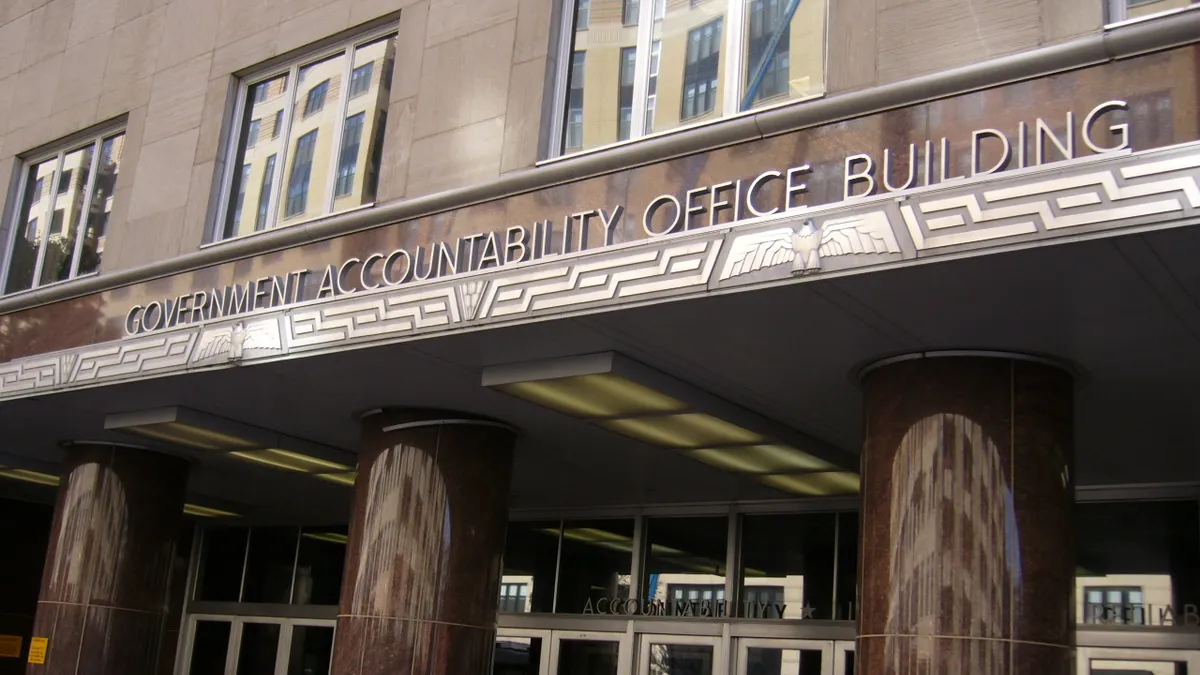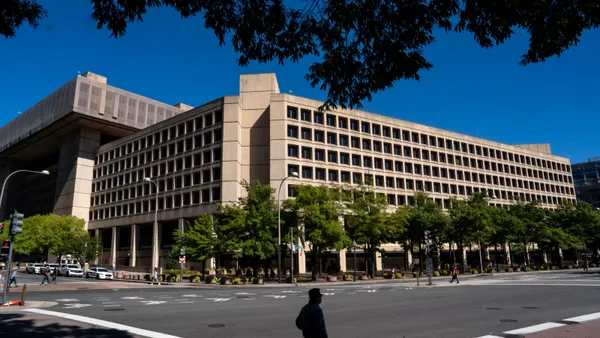Dive Brief:
- A majority of federal agencies used less than 25% of their headquarters’ building capacity, according to a report from the U.S. Government Accountability Office.
- The report sampled 24 federal agencies in a three-week sample period from January through March 2023, and found that even agencies with higher than average building usage only used an estimated 39% to 49% of their headquarters.
- GAO says this reflects that federal bodies are struggling to determine how much office space they need. The government agency also pointed to excess space, inefficient building configurations and a focus on hybrid work as key utilization challenges.
Dive Insight:
Noting that federal property management has been on its High-Risk List since 2003, the GAO said federal agencies spend almost $2 billion dollars per year to operate and maintain federal office buildings, regardless of utilization, and that any reduction in office space could reduce these costs.
The federal government’s inefficient use of office space is longstanding. During a Federal Real Property Council meeting in January 2023, more than half of the agency officials in attendance “acknowledged that their headquarters’ buildings had excess space prior to the pandemic.” This excess space has grown since then. All 24 agencies sampled said their in-office workforce has not returned to pre-pandemic levels due to increased use of telework and remote work.
While the amount of hybrid work varies by agency, due to individual demands and needs, the frequency of episodic telework and remote work has increased overall, the GAO report said. The report also found that building configurations do not support a modern workplace and include numerous areas no longer needed today, such as administrative and storage spaces.
Despite these changing office needs, officials are navigating through a host of challenges in their attempts at office reconfiguration. Agency officials ranked the budgetary resources as their biggest roadblock to headquarters’ utilization.
Budgetary resource concerns revolve around the need to reconfigure buildings to support hybrid office dynamics. USDA officials, for example, stated that updating their two-building headquarters to support higher density and office sharing would require millions of dollars in investments, according to the report.
The budgetary impediment to office reconfiguration efforts is followed by concerns about the future of in-office attendance policies, a reluctance to share headquarters space with other agencies and a lack of standards for utilization.
“Right now it’s all about, ‘What does the workforce of the future in government need as far as space requirements?’” Kevin Wayer, JLL president of government, education, infrastructure and life sciences, said in an interview with Facilities Dive. “We are very busy helping government clients determine their portfolio needs for the future. It is a growing and active piece of our business.”
At the same time, building updates are often only partially taken. For instance, the Department of Housing and Urban Development’s recently updated wing supports hybrid work, but leaves the rest of the building inefficient and outdated.
The accountability office noted that as of April 2023, more than half (4,108 of 7,685) of the General Services Administration’s leases have expiration dates scheduled for calendar years 2023 to 2027. Allowing unneeded leases to expire would directly reduce costs, with federal agencies spending over $5 billion annually to lease office space from the private and government sectors, the GAO said.














